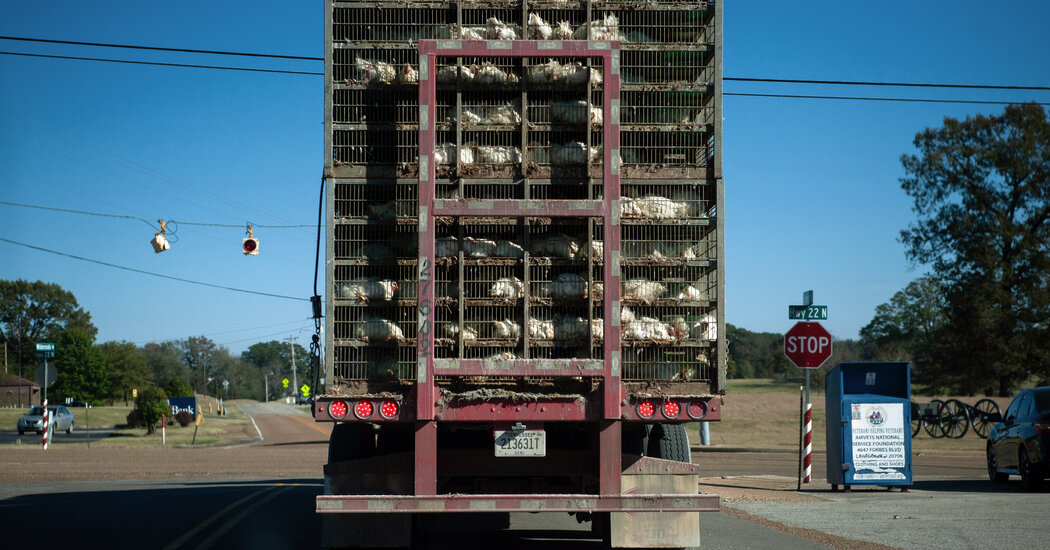
As they travel, farm animals can also leave pathogens in their wake. In one study, scientists found that disease-causing bacteria, including some that were resistant to antibiotics, flowed off moving poultry trucks and into the cars behind them. The trucks were “just disseminating these antibiotic-resistant bacteria,” said Ana Rule, an expert on bioaerosols at Johns Hopkins University Bloomberg School of Public Health and an author of the study.
Contaminated transport vehicles have also been known to spread pathogens long after the infected animals have disembarked and may be playing a role in the dairy cow outbreak, officials have said.
Infected animals can then spark outbreaks at their destinations, including livestock auctions, which often attract animals too old, sick or small for the commercial food supply. Such auctions “would be a great place for H5N1 to move from cattle into swine,” Ms. Linder said.
Pigs are particularly concerning. They can be infected by multiple types of flu at once, allowing different strains to swap genetic material and giving rise to novel versions of the virus.
The global trade in live pigs has fueled the evolution of swine flu, by sending pigs carrying one flu virus to parts of the world where different flu viruses are circulating. Harmful new forms of Streptococcus suis, bacteria that can sicken both pigs and humans, have emerged through a similar process.
The global swine trade is “increasing the diversity of pathogenic strains all around the world,” said Gemma Murray, an evolutionary geneticist at University College London, who conducted the research on strep.
Gaps and loopholes
The Agriculture Department has the authority to restrict the interstate movement of livestock, but in practice there are few barriers to cross-country transport. “I think the U.S.D.A., for the most part, wants to make that life-cycle journey as seamless as possible,” Ms. Linder said.
Under a federal law first passed in 1873, livestock being transported for longer than 28 consecutive hours must be offloaded for at least five hours for food, water and rest. But critics say the 150-year-old law is more lax than regulations in comparable countries and rarely enforced. The Animal Welfare Institute found just 12 federal investigations of potential violations in the past 15 years.
The law also exempts shipments by water or air. Compassion in World Farming has documented the use of “cowtainers” to transport calves from Hawaii to the continental United States, on boat journeys that can last five days or longer.
Livestock traveling between states must carry a certificate of veterinary inspection, issued by the state agriculture department or an approved veterinarian, declaring the animals to be healthy. But those visual inspections would not catch infected but asymptomatic animals, which has probably played a role in spreading bird flu to new dairy herds.

